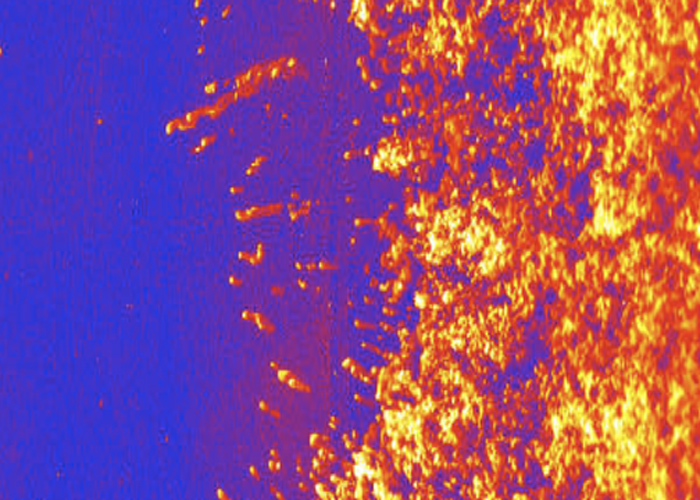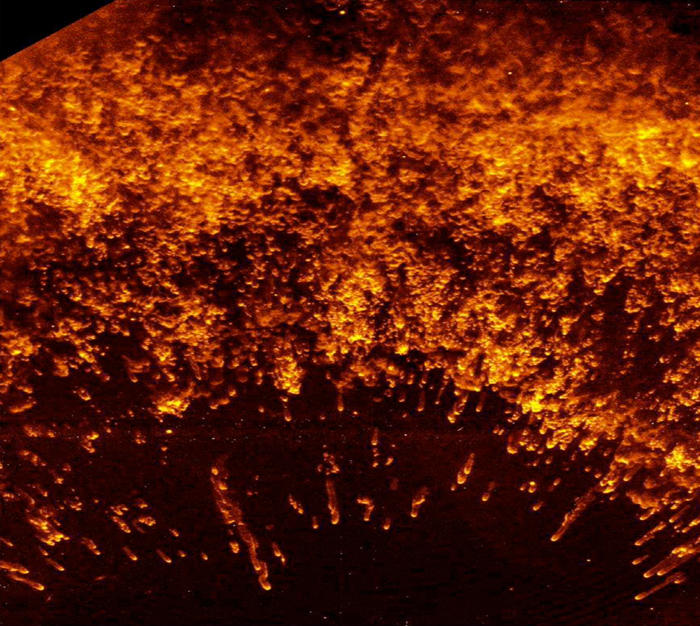A University of Missouri professor identified new features in material that is being ejected from the dying star Helix Nebula. A high-resolution near-infrared image revealed new information about the knots, or the structures that are formed from the emissions of the nebula. In the Helix Nebula, the knots often appear to be comet-shaped. The shape of the tails can vary from the inner edge to the outer ring of the nebula.

The Helix Nebula is a planetary nebula, and also is one of the closest nebulae to Earth. The process of developing a nebula occurs slowly over a period of 100,000 to 1,000,000 years. Credit: University of Missouri
"The knots in the Helix Nebula have been well known for 50 years," said Angela Speck, associate professor of astrophysics in the College of Arts and Science. "For the first time, technology allowed us to take a high-resolution infrared image that showed us tens of thousands of previously unseen comet-shaped knots that look like a massive fireworks display in space."
The Helix Nebula is a planetary nebula, and also is one of the closest nebulae to Earth. The process of developing a nebula occurs slowly over a period of 100,000 to 1,000,000 years. The new image was taken with the infrared camera on the Japanese Subaru Telescope in Hawaii and is one of the highest resolution images in the infrared wavelength with such a wide coverage of the Helix Nebula.

A high-resolution near-infrared image revealed new information about the knots, or the structures that are formed from the emissions of the Helix Nebula. Credit: University of Missouri
"Originally, we thought the hydrogen molecules ejected from a dying star did not survive very long because of strong ultraviolet light," Speck said. "We have found that the dust clouds prevent light from reaching and destroying the molecules. When the light can't come into the dusty clumps in the nebula, the molecules can't die. The hydrogen molecules can survive as long as they remain in the knots."
Astronomers estimate that that the Helix Nebula may have as many as 40,000 knots with a total mass that might be equal to 30,000 Earths. The steady evaporation of gas from the knots on the Helix Nebula causes the comet-like shape. The origin of the knots is unknown, and scientists have competing hypothesis about why the comet-shaped knots form.
"This new image provides us a better understanding of the process that creates the comet-shaped knots and helps us determine what really is going on," Speck said. "Based on our observations, we can't attribute the cause of these knots to any one mechanism. In actuality, multiple mechanism work together to create the knots."
"A 'Firework' of H2 Knots in the Planetary Nebula NGC 7293 (The Helix Nebula)," will be published in The Astrophysical Journal in August.





Comments